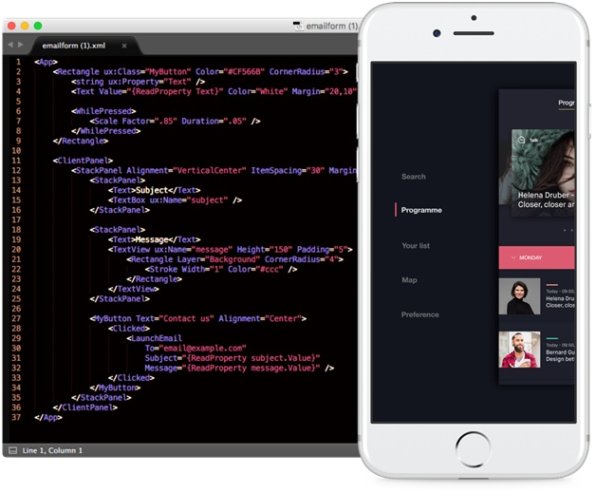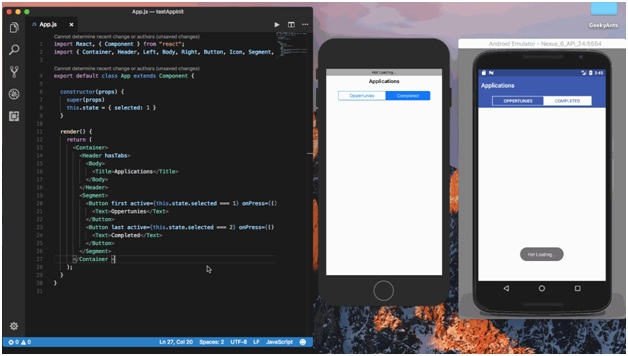More than 12 years have passed since the App Store’s birth in July 2008. Then, it contained only 500 applications. Still, it has triggered the growth of the app development market.
Today, it’s hard to imagine a person who is not using mobile applications on a smartphone. According to some reports, the average smartphone user spends about 2 hours and 20 minutes a day using the device. This doesn’t sound very impressive. But when added up, it is 35 days a year! This is a completely different matter, right?
Therefore, a company that has its own mobile application can theoretically expect a huge involvement from users. If the trend persists, personal computers may take a back seat, giving way to more convenient devices. So, it would be really foolish to miss out on this opportunity.
There are many resources on the web that may guide you on how to develop mobile applications. In our article, we will discuss what types of applications exist, as well as which languages prevail.

Table of Contents
The common types of mobile apps

From the development perspective, there are 2 kinds of mobile applications.
Native mobile applications
If your budget is huge, going the native way might be a working option. Such applications are developed for a specific operating system, which makes them “native” for a certain platform.
The obvious drawback of this approach is in the need to create individual apps for each platform. Most often, you will work on two versions — for iOS (based on Swift or Objective-C) and for Android (based on Java). This leads to a significant increase in production costs.
Cross-platform mobile applications
Multi-platform apps cover the largest possible audience and come at the lowest possible cost. Cross-platform frameworks, like React Native, are used to create such applications.
Cross-platform applications have obvious advantages. First of all, a single code for all platforms allows you to create such apps in a super quick and cheap way. Also, it facilitates maintenance and optimizes update delivery.
Despite the widespread myth, the performance of multi-platform applications is in no way inferior to the native ones, since frameworks like React Native run native APIs.
The slow load problem was a real headache earlier. However, now React Native devs can use Ram Bundles and Inline Requires, which allows downloading only what is needed. Thus, a significant acceleration of the download speed is achieved, and multi-platform applications are no longer inferior to the native ones in speed.
Due to the fact that most development companies focus on two main operating systems — iOS or Android, we’ll talk about them.
iOS segment

It is the best option to cover the audience using Apple’s products.
To create an application, you will need the Xcode SDK on your Mac. It will help you create and debug applications as efficiently as possible. Xcode has all the necessary tools that you will need during development, including a debugger, code editor, and simulator.
For creating a native iOS application two programming languages are used: Objective C and Swift. Although Objective-C still has its fans, we will consider Swift as it is the leader in this segment.
Swift
That’s an entirely new (released in 2014) language specification from Apple. With the support provided by the company and the growing popularity of the language itself, Swift outpaced Objective-C in 2016 and became the primary option for creating native iOS applications.
Apple has made it clear to developers that Swift will be used as the main language for mobile applications. Swift is built on Objective-C. However, as a newer technology, it has many advantages. It is tight, agile, and easy to understand. Objective C programmers do not experience any problems with switching to Swift, which further pushes the original language to the sidelines.
Android segment

The Android segment is controlled by another tech giant, Google. In addition to the branded Google Pixel smartphones, the devices developed by many global corporations like Samsung or Xiaomi are also powered by the Android operating system. This makes Android the most used OS in the world.
To create Android applications, you need an appropriate SDK. We are talking about Android Studio. This SDK was built specifically for Android apps development. It offers users the necessary code templates and other tools to facilitate the development process.
Java is the best choice here, but we will also consider Kotlin.
Java
Created in 1995, Java was quickly selected as the best choice for Android development in 2008 (when Android OS appeared). This is one of the most popular and widely used languages, not only for mobile apps.
Of course, there are critics who are sure that Java is outdated, because you must still write large portions of code to complete an elementary operation. In general, Java will be difficult for a beginner, and this language does not cope well with modern trends, which manifest code simplicity. But this is still a good choice, and Java specialists are highly sought-after. However, speed and seamlessness of app performance are more important.
That is why the developers decided to create a new solution.
Kotlin
In 2017, it became apparent that Google chose Kotlin as the main language for creating Android apps. As in the case of Swift, Kotlin is interoperable with Java. You can employ Java libraries for Kotlin and switching from one language to the other will not cause inconvenience.
Cross-platform solutions
As we said above, the native applications development and maintenance are expensive. Of course, it all depends on the needs of a particular company. Nevertheless, it is safe to say that many companies prefer to cover both segments at once. This is where cross-platform development comes in handy. The JavaScript & React Native duet is the best option here.
JS with React Native
Created and released in 2015, the React Native framework uses the JavaScript code and structure to develop mobile apps. Due to the fact that JavaScript itself is a commonly used, convenient, and simple language, React Native is also very popular among developers.
The main advantage of the framework is that it uses platforms’ native UIs. This allows you to create UI pieces as natively as possible.
The framework versatility has made React Native one of the best choices for multi-platform development.
Let your goals guide you
It is important to understand that there are no 100% correct solutions. Those options that we described above are the most popular, convenient and widely used solutions for mobile app development. However, the specifics of a particular business may force developers to use languages such as Ruby on Rails or others.
You must clearly understand the goals that you pursue, and the audience whose problems you are going to solve with your application. Only this will help you make the right choice.



